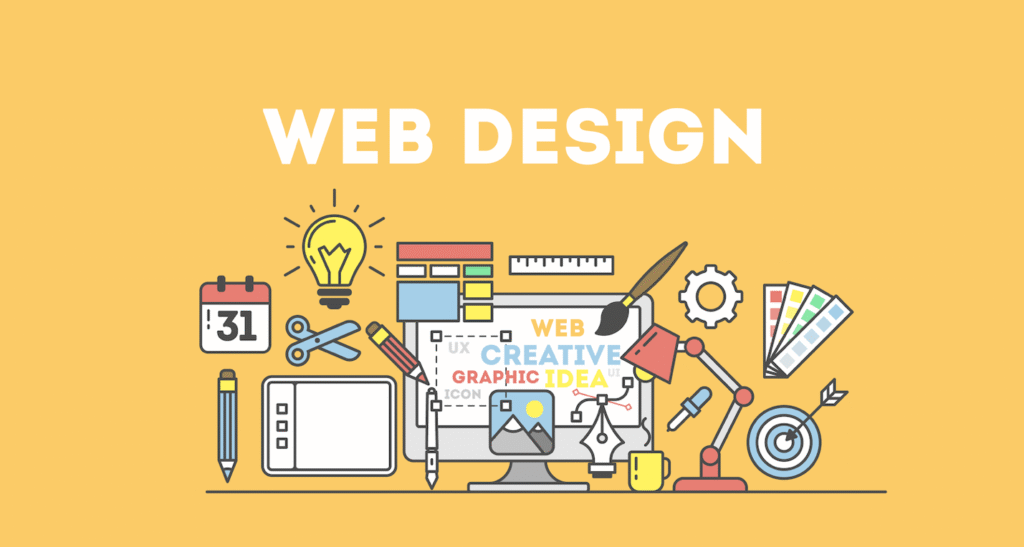
Why Web Design Agencies Are Now Strategic Growth Partners, Not Just Designers
There was a time when hiring a web design agency meant simply getting a beautiful website — polished visuals, catchy slogans, and sleek navigation. But in 2026, that’s not enough. The role of a web design agency has evolved far beyond aesthetics. Today’s agencies are strategic growth partners — blending SEO, UX, data analytics, and conversion strategy to deliver measurable business results.
Let’s dive into how this transformation happened, why it matters, and what it means for small businesses looking to compete in the digital-first world.
1. The Evolution of Web Design Agency: From Pretty Pages to Powerful Platforms
The early 2010s were dominated by static websites — design mattered, but conversions were an afterthought. By the late 2010s, responsive design became standard, and user experience (UX) entered the conversation.
Now, in 2026, the game has changed again. A website isn’t a digital brochure — it’s your growth engine. Modern website design services are built on three core pillars:
-
Experience: How easily users navigate and interact.
-
Performance: How fast your website loads and adapts across devices.
-
Data: How effectively it tracks, measures, and improves user behavior.
A web design agency today doesn’t just ask, “What should it look like?” — it asks, “What should it do for your business?”
2. SEO Is Now Built into the Design DNA
Search engine optimization isn’t a post-launch checklist anymore — it’s part of the design process from day one.
Top agencies integrate SEO into every layer of website architecture:
-
Site structure: Ensuring clear navigation and URL hierarchy for better crawlability.
-
Speed optimization: Because every second of delay can reduce conversions by 20%.
-
Content hierarchy: Using proper HTML semantics (H1s, meta tags, schema) for contextual clarity.
-
Mobile-first indexing: Designing for smartphones first — since over 70% of web traffic now originates from mobile devices (Statista, 2026).
For website designers for small business, this SEO-first mindset is critical. A beautifully designed site that doesn’t rank is like a store hidden in a deserted alley — impressive, but invisible.
3. The Rise of Data-Driven Design
One of the biggest shifts shaping the web design world is data-backed decision-making. Instead of designing based on assumptions, agencies are using analytics tools, heatmaps, and A/B testing to refine user experiences continuously.
A web design agency in 2026 is just as likely to employ data scientists as it is designers. They use tools like Hotjar, Google Analytics 4, and HubSpot to uncover how users interact, where they drop off, and what drives conversions.
For example:
-
A landing page redesign based on user heatmaps can boost conversions by 30%.
-
Optimizing form placements using behavior analytics can reduce bounce rates by 20%.
Website design services now blend creativity with conversion science — ensuring every visual choice has a business impact.
4. UX and Conversion Optimization: The New Core of Design
User Experience (UX) and Conversion Rate Optimization (CRO) have merged into one powerful approach: design for intent.
Here’s how agencies now design smarter:
-
Micro-interactions: Subtle animations guide users naturally.
-
Simplified navigation: Fewer clicks to purchase or sign up.
-
Personalized experiences: Dynamic content adapts to user behavior.
-
Trust triggers: Clear CTAs, testimonials, and transparent pricing.
It’s not about creating something “beautiful” — it’s about creating something that converts.
For small business owners, this means every pixel of their site can help build credibility, retain visitors, and drive sales.
5. Integrating Digital Marketing into Web Design
A modern web design agency doesn’t stop at design delivery — it integrates ongoing digital marketing services to sustain growth.
Here’s how:
-
SEO and Content Marketing: Attract qualified leads through blogs, landing pages, and case studies.
-
Social Media Integration: Design that’s shareable across platforms.
-
Email Capture Systems: Embedded forms and pop-ups tied to marketing automation.
-
Analytics Dashboards: Continuous tracking of traffic, behavior, and ROI.
The best website design services today come with built-in marketing alignment — ensuring your website isn’t just live but thriving.
6. Website Designers for Small Business: The Competitive Advantage
Small businesses often assume that big-budget brands dominate online visibility. But with the right website designers for small business, they can compete — and win.
Here’s why:
-
Local SEO expertise: Targeting region-specific audiences for higher visibility.
-
Scalable CMS solutions: Easy to update without technical complexity.
-
Budget-friendly analytics: Affordable tools for insight-driven growth.
-
Conversion-focused pages: Optimized for calls, bookings, and local sales.
In 2026, a website can make or break a small business. Those that invest in strategic web design services are seeing measurable returns in both traffic and revenue.
7. Collaboration Across Disciplines: Design Meets Strategy
Modern agencies operate more like digital ecosystems than traditional service providers. Designers work alongside marketers, UX specialists, and even Salesforce developers to deliver holistic growth.
For instance:
-
Designers ensure brand consistency and user flow.
-
Marketers align the site’s messaging with conversion goals.
-
Developers integrate CRM systems and automation tools.
This cross-functional collaboration makes a web design agency not just a vendor — but a strategic partner in driving sustainable business growth.
8. The Future of Web Design: AI, Voice, and Personalization
Looking ahead, web design will evolve beyond screens. AI and machine learning are personalizing websites in real-time, adjusting layouts and CTAs based on user behavior.
Trends to watch in 2026 and beyond:
-
AI-driven personalization: Sites that adapt to user intent automatically.
-
Voice-first interfaces: Optimizing for voice search and smart devices.
-
No-code and low-code tools: Empowering small businesses to self-manage websites.
-
Sustainability-focused design: Energy-efficient hosting and eco-conscious UX.
Agencies that embrace these trends will redefine how brands engage audiences — moving from static interactions to intelligent digital experiences.
9. Final Thoughts: From Creators to Growth Architects
A web design agency today is not just about “making websites.” It’s about engineering digital ecosystems that attract, convert, and retain customers.
The future belongs to agencies that understand growth — those that blend creativity, analytics, marketing, and strategy into every design decision.
For small businesses, partnering with a modern agency means gaining a digital ally — one that doesn’t just design, but drives measurable success.

